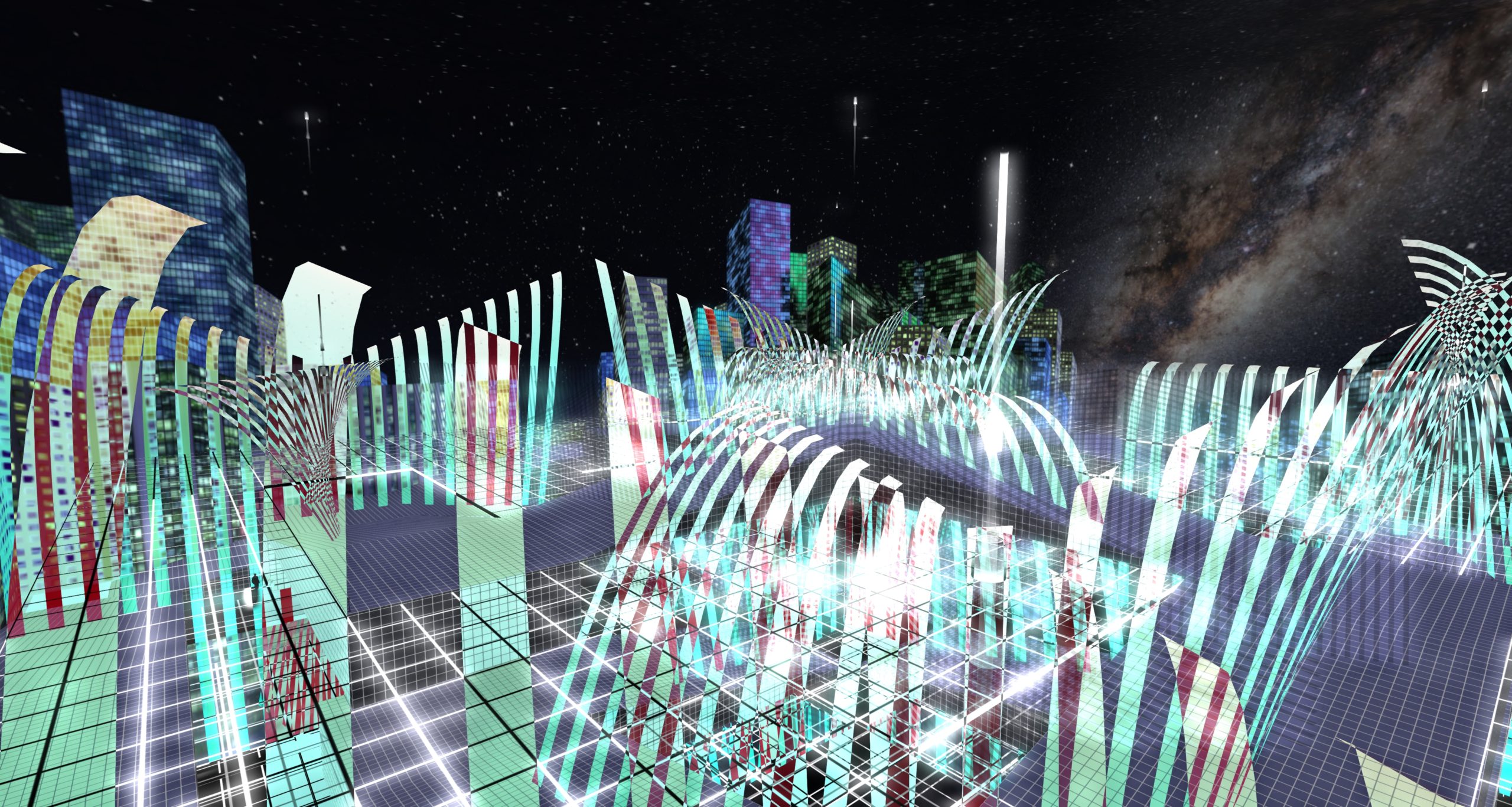L’introduzione dei sistemi di Intelligenza Artificiale nei Mondi Virtuali era solo questione di tempo, e infatti ci siamo arrivati. I primi AI-bot sono stati introdotti in Second Life, che come sempre è di un passo avanti agli altri, ma anche in Spatial, in VR_Chat ed in Horizon World. Ma presto li vedremo dappertutto, così come sta avvenendo nel mondo reale.
Siamo stati affascinati, negli ultimi due anni, da sistemi come Chat-GPT, Gemini, Llama, e altri che stanno nascendo come funghi, e ci siamo prima divertiti a usarli, a testarli, e poi ad utilizzarli come ausilio al nostro lavoro, negli studi, nelle ricerche. Questo modo di utilizzare i chat-bot sta mettendo in crisi, giustamente, i sistemi di ricerca tradizionali, come la search di Google, ma è l’evoluzione tecnologica, va benissimo per tutti. Io utilizzo Chat-GPT per scrivere codice o per controllare quegli script che non mi funzionano, o anche per generare immagini, che inserisco, ad esempio, nei miei post, o per ricerche bibliografiche. Bisogna però stare attenti, altrimenti si rischia di incorrere in gravi inesattezze, ad esempio portando in tribunale della giurisprudenza inventata di sana pianta, come è successo in un tribunale italiano quelche giorno fa, o anche in USA prima ancora.

Occorre essere certi che le risposte che ci fornisce siano corrette, prima di usarle. E questi Chat-bot li stanno naturalmente utilizzando gli studenti, per fare i compiti o svolgere esercitazioni, e qui piuttosto che demonizzarli o impedirne l’uso, cosa ormai impossibile, gli insegnanti dovrebbero insegnare ad usarli al meglio, preparandosi bene per questo compito.
Ma l’AI non è solo Chat-bot e Chat-GPT, è anche tante altre cose. I sistemi di AI controllano ormai quasi tutti i sistemi gestionali, dal pilotare gli aerei, ai sistemi d’arma, alle procedure di istruttoria bancarie, e fino ad un massiccio impiego, in certi paese, per il riconoscimento facciale delle persone, in un sistema di controllo pervasivo, che in Unione Europea, ad esempio, è vietato dall’AI-Act. E questo benedetto AI-Act, approvato nell’agosto scorso, andrebbe letto a fondo, perchè è un esempio grandioso di elaborazione concettuale e di analisi di questi sistemi, che ha portato ad un insieme di regole e di indicazioni, a protezione della privacy, del rispetto delle persone, della trasparenza e della riconoscibilità di questi sistemi. E’ uno dei risultati più importanti, dopo l’Euro ed il mercato comune, prodotti dall’Unione Europea.

Il problema della “riconoscibilità” è fondamentale, quando pensiamo all’introduzione di questi sistemi nei Mondi Virtuali, perchè occorre essere certi che quando incontriamo una persona in ambiente virtuale, siamo in grado di risconoscere se sia un umano o un AI-bot introdotto sulla piattaforma come Avatar. Così come pure dobbiamo essere certi che questi AI-bot, ben riconoscibili, non usino i nostri dati scambiati nelle chat per il loro addestramento, con grave danno alla nostra privacy, se non autorizzati da noi.
E questi sono stati i temi della Town Hall di ieri, organizzata con grande sensibilità dal management della Linden Lab. Ci sono stati tantissimi interventi su questi temi, così come su quelli della protezione della proprietà intellettuale, e sulla introduzione in piattaforma e sul marketplace di prodotti generati con AI, un altro tema sensibilissimo posto dall’introduzione di questi sistemi inworld. E’ stato un dibattito molto interessante, in cui sono intervenuto sul tema della “identificabilità“. Siamo ancora all’inizio della discussione, naturalmente, e molti passi in avanti occorrerà fare, ma sono i temi di cui si dibatte in tutto il mondo, e anch’io, per quello che posso, cerco di dare qualche contributo, per quanto minimo possa essere rispetto ai giganti dell’AI.

E’ mia opinione che i TOS delle piattaforme virtuali vadano aggiornati, per dare delle indicazioni e delle regole certe sull’utilizzo di questi sistemi di AI. Le regole non sono facili da imporre, perchè nel creare un account, come faceva notare ieri Philip Rosedale, si può mantenere l’anonimato, quindi non è facile imporre una tag di riconoscimento, se non basandosi sulla buona fede di chi crea l’account. Credo che su questo punto bisogna fare dei passi in avanti da parte dei progettisti, perchè un sistema per imporre l’identificazione degli AI-Avatar si può, e si deve, trovare. Altre regole andrebbero poi poste sulla privacy, estendendo i TOS già attualmente in vigore, come anche sulla proibizione di mettere sui marketplace dei prodotti generati da AI.
Occorrerebbe insomma, ed è una proposta che faccio alla Linden Lab, creare un comitato di esperti, che nel giro di qualche settimana produca una serie di linee guida, che possano servire per effettuare delle modifiche tecniche ed ai TOS. Credo sarebbe il modo più efficace per capitalizzare tante competenze, che pure sono emerse nella Town Hall di ieri, e per adeguare la piattaforma a queste nuove evoluzioni, ma anche a questi nuovi rischi.
Un saluto.

ENGLISH VERSION
The Invasion of Artificial Intelligences
The introduction of Artificial Intelligence systems into Virtual Worlds was only a matter of time, and now, it’s happening. The first AI bots have been introduced in Second Life, which, as always, is one step ahead of the rest, but also in platforms like Spatial, VRChat, and Horizon Worlds. And soon, we’ll see them everywhere, just as we are in the real world.
Over the past couple of years, we’ve been fascinated by systems like ChatGPT, Gemini, Llama, and many others popping up like mushrooms. At first, we played with them, tested them out, and then started using them to support our work, studies, and research. This way of using chatbots is rightfully challenging traditional search systems, like Google Search—but that’s technological evolution, and it’s a good thing for everyone. I personally use ChatGPT to write code or to debug scripts that don’t work, to generate images I use in my posts, or even for bibliographic research. But we need to be careful—otherwise, we risk running into serious inaccuracies. For example, there was a recent case in an Italian court where someone presented entirely fabricated legal precedents, generated by AI, just like it had already happened in the U.S.
We must be sure the answers these tools give us are accurate before relying on them. Naturally, students are also using these chatbots to do their homework or complete assignments. Rather than demonize or ban their use, which is now impossible, teachers should focus on showing students how to use them wisely, and prepare themselves accordingly for this task.
But AI isn’t just about chatbots and ChatGPT. It’s also so much more. AI systems are now behind almost every management system, from piloting aircraft, to weapon systems, to banking procedures, and even, in some countries, widespread facial recognition as part of a pervasive surveillance system. In the European Union, for example, this kind of surveillance is banned by the AI Act. And this AI Act, approved last August, really deserves to be read carefully, because it’s a remarkable example of conceptual clarity and thoughtful analysis of these technologies. It has resulted in a set of rules and guidelines to protect privacy, uphold human dignity, and ensure transparency and traceability of AI systems. It’s one of the most important achievements of the European Union, right up there with the euro and the single market.
The issue of recognizability is fundamental when we think about introducing these systems into Virtual Worlds. We need to be sure that, when we meet someone in a virtual environment, we’re able to tell whether we’re interacting with a human or an AI bot introduced into the platform as an avatar. Likewise, we must be certain that these AI bots, clearly identifiable, are not using the data exchanged in chats to train themselves, which would be a serious violation of our privacy if done without our consent.
These were exactly the topics discussed at yesterday’s Town Hall, thoughtfully organized by Linden Lab’s management. There were many contributions on these issues, as well as on the protection of intellectual property and the introduction of AI-generated content on the platform and in the marketplace—another extremely sensitive topic brought on by the arrival of these systems inworld. It was a very engaging debate, and I personally wrote on the topic of “identifiability.” Naturally, we’re still at the beginning of this conversation, and there’s a long way to go, but these are the same issues being discussed all over the world. And I too, in my own small way, try to contribute—however modest that may be compared to the giants of AI.
In my opinion, the Terms of Service of virtual platforms need to be updated to provide clear guidelines and rules for the use of AI systems. Setting rules isn’t easy, because, as Philip Rosedale pointed out yesterday, it’s possible to remain anonymous when creating an account. That makes it difficult to enforce any kind of identification tag, unless we rely on the good faith of the person creating the account. I believe this is an area where developers need to make progress, because a system to require the identification of AI avatars can and must be found.
Additional rules should also be introduced regarding privacy—by expanding the current Terms of Service, as well as restrictions on selling AI-generated content in the marketplace.
In short, and this is a proposal, I’d like to make to Linden Lab, there should be a committee of experts formed to produce, within a few weeks, a set of guidelines that can lead to technical adjustments and updates to the Terms of Service. I believe this would be the most effective way to capitalize on the wealth of expertise that emerged during yesterday’s Town Hall, and to adapt the platform to these new developments, but also to the new risks they bring.
Best regards.






















































